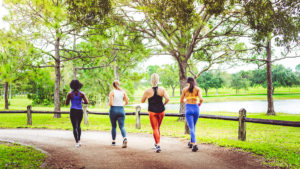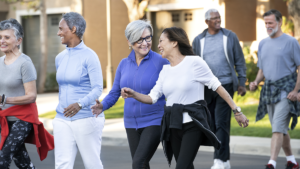Behavior Change
From Consideration to Commitment
Many individuals who seek out fitness facilities, consultations, or assessments are not undecided about whether physical activity matters. They are undecided about whether structured support is necessary, appropriate, or sustainable…
Harnessing the Power of Visualization to Stay Committed to Your Fitness Routine
When you’re trying to stick with a fitness program; whether it’s working out three times a week, going for 10,000 steps a day, or hitting the weights consistently, motivation and…
The Psychology of Seasonal Motivation
September is often described as the “second January” in the fitness world, bringing a wave of renewed motivation. Behavioral scientists have identified this as the “fresh start effect”. These are…
The Easiest Way to Be More Active—Without Exercise
Imagine increasing your daily activity not through the gym or planned workouts, but simply by shifting when you go to bed. According to a recent PNAS‑cited study featured in Real…
How Much Exercise Do You REALLY Need to Stay Healthy?
Clearing Up the Confusion Between social media fitness trends and ever-evolving health advice, it’s easy to feel overwhelmed about how much exercise is truly necessary to stay healthy. Do you…
Taking Care of Ourselves and the Planet
A New Way to Think About Wellness Sustainability isn’t just about recycling or using less plastic anymore. It’s become a way of thinking about all the choices we make—including how…
Social Connectedness, Strengthening Bonds, Strengthening Health
The fundamental human need for social connection is as intrinsic as the need for food and shelter. This innate desire to form meaningful relationships profoundly influences overall health and well-being….
Using Behavior Change Science to Enhance Fitness and Wellness Coaching
Understanding the science of behavior change is pivotal for fitness professionals aiming to foster lasting health improvements in clients. Despite widespread awareness of the benefits of regular physical activity, many…
Secrets of Super Agers
What’s their secret? Why do Super Agers, people who live past 90, have such long lives? What can you do to live a longer, healthier life?
Parenting and Finding Exercise Time
Generally speaking, fitness program directors and creators may want to brainstorm how to offer family focused fitness programs, or how to provide more robust child care.
Neighborhood Walking and Social Connection
Fitness professionals may want to consider supporting simple local activities, such as neighborhood walking, to boost “social capital.
Sleep Hygiene Is One Key to Health
Sleep hygiene consists of habits and behaviors that help us to get enough good-quality sleep to leave us refreshed, both physically and mentally. These days, improving sleep hygiene is a…
Group Fitness and the Stages of Behavior Change
Learn how to notice the stages and inspire participants from where they are within the transtheoretical model of behavior change (TTM).
Training Happy for Positive Behavioral Change
Are happiness exercises part of your training program design? Does that question seem odd? As you embark on a new year of helping clients work toward their fitness resolutions, this is the perfect time to pause and consider how you can use every tool at your disposal to make sure people succeed. Your toolbox includes harnessing the power of positivity to promote physical activity.
Health Coaching: Starting Your Business
Are you excited about helping people to transform their lives through health coaching? You’ve educated yourself, earned certifications, gained practical experience and are ready to start your business. What’s next?
The “Willpower Trap”
Are you trying to lose weight, eat more healthfully or stop smoking? Have you tried to change but not been able to do so? Do you chalk it up to lack of willpower? The good news is that willpower has very little to do with whether we can kick our lifelong bad habits.
Physical Literacy for Kids
Health and fitness professionals are important players in a nationwide movement to promote and support physical literacy, which in turn will help to set the stage for a healthier, more active, more productive generation of children
hey’re doing either too little or too much.
For U.S. youth, that’s the stark paradox of physical activity. While
more than half of adolescents fail to accumulate the recommended 60
minutes of exercise at least 5 days per week (CDC 2015), many young
athletes are becoming specialized too early in life, which fosters a
culture of elite sports that discourages broad participation.
















